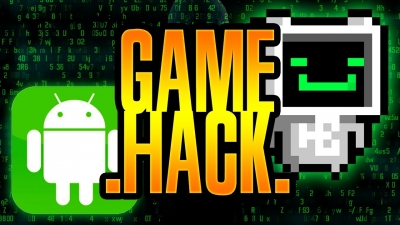Electronic competitive games have been around since the ‘80s when people would try to achieve the highest scores in arcades and other video games. However, the whole esports industry is fairly more recent. Let’s take a look to see what revolves around those matters!
In modern days, games are present in the daily lives of more than a billion people around the world. Due to their accessibility — especially with mobile gaming —, everyone can download and enjoy a fun time with electronic games. However, in the competitive scene, things are a bit different: despite most games having a “ranked” mode, not all of them are esports nor designed to be a competition. We’ll be taking a look at the most common definition of competitive gaming!
A bit of history: The first competitive games
Playing games is a part of being human. Board games such as Mahjong or Chess have been around for centuries. They also had formal competitions a long time before the advent of electronic devices, and we know the great names that developed and mastered those “disciplines” from early history.
However, the true popularization of gaming as a concept similar to what we know today began only after the ‘70s. Gaming development companies started to release their titles and small competitive scenes started to form around those electronic games.
The first tournament that drew attention from a (yet) small crowd was the “Intergalactic Spacewar Olympics,” a tournament held in Stanford University back in 1972. Disputed in the then-popular title “Spacewar!,” it’s considered among the first electronic gaming tournaments in history. The prize was one year of subscription to Rolling Stone Magazine.
However, competitive games became more and more prominent. In 1980, the Space Invaders Championship mobilized over 1,000 players across the United States to test their skills for a chance to play in the grand finals. Despite being disputed in a very simple format — people would just try to reach the highest possible score —, many gamers still embraced the competition for the prize: a copy of the game “Missile Command.” In some sense, we can call “Space Invaders” the first competitive game ever: the game developer, Atari, even started a professional league that lasted three years, being the first “esports” league to exist.
From that point onward, technology evolved rather fast, and the gaming industry quickly adapted to that evolution. In the late ‘90s, individual consoles were already very popular, and fighting games — with titles such as “Street Fighter,” “SNK vs. Capcom,” among others — were starting to become a trend. They led the way to what we would know as esports tournaments several years later. The main difference was (and still is) that those games aren’t played individually — therefore, players could test their skills in real-time.
In the XXI century, however, a phenomenon named “StarCraft” changed forever the destiny of competitive gaming, alongside other very important titles such as the multiplayer online battle arena “Dota” and the first-person shooter “Counter-Strike.” Being really popular in South Korea, the real-time strategy game, played on PC, opened the doors for more and more players that could play competitively, in a ranked format, from home. The same happened with the other two titles, thus creating what we now know as the esports scene.
Modern days: what is competitive gaming?
Competitive gaming could be defined as basically playing against others in or out of a ranking system; in the strict definition of the term, it can be any game where you have the chance to outperform another person. Even amateur, casual players can tune in to competitive play — when you play a ranked match of “League of Legends,” for instance, in the general meaning of the term, you are being a competitive gamer, since you’re looking for a position in the in-built LoL ranking. But nowadays, that notion is deeper than casually looking for ranking placements, those being just an “entry level” for a talented competitive gamer.
There’s a difference between the competitive gaming scenario and just playing for ranking points; competitive gaming has got a meaning much stronger than occasionally launching some ranked games. Tournaments and leagues are very popular among spectators. Professional esports players, more often than not, have all their lifestyles guided by the chosen game. Esports competitions can reward very important sums of money, with high prize pools, such as the Dota 2 The International with over $40 million.
Therefore, we can label “competitive gaming” as playing in high-level tournaments, leagues, and events, aiming for a slice of the prize pools. This market is so intricate and enormous that tournaments are divided by “tiers”, where each tier has different ways of competing, audiences, and rewards. At the highest level — or in Tier 1 —, stand the best players in the game around the world. Competitive games have also grassroots categories, in order to nurture and shape more high-level players, thus creating an ecosystem.
To join this front end, more than raw talent is often required: discipline, charisma, and dedication are the key qualities that professional esports athletes have. In that sense, if you’re looking for a spot in an organization, shaping your skills beyond the gaming level might be an important step.
Esports and competitive gaming
Esports games are founded in this (somewhat recent) notion of competitive gaming — beyond small ranking systems. Professional players are considered athletes. Electronic sports have such a tense competition scenario that the daily routine for those pro gamers is shaped by the discipline they dive into. They’re not just playing for fun.
That’s the difference between esports and regular games; esports have a defined competitive structure, with prize money and events, and they’re multiplayer. That’s why a video game like “Mario” isn’t usually labeled as an esport: the borders of professional competitive gaming are much wider.
While competitive gaming can have a “softer” meaning — trying to win any given game, for instance —, esports summarizes the whole competitive environment and athletes’ behavior, being an industry by itself.
What are the most popular competitive games?
One of the advantages brought by technology is that we have a very diverse variety of genres, disciplines, titles, and professionalization opportunities. Each of the below-mentioned genres is part of the fast-paced esports world, but they have options for casual gaming as well — as previously noted, competitive play can be just one ranked game. Let’s see a quick description of the most popular genres.
Multiplayer online battle arena
For many people, games like “Dota 2” and “League of Legends” are the first titles that come to mind when they think about competitive gaming. In this genre, two teams with five players each fight for dominance on a map, trying to reach the other team’s base. Before joining the action, each player selects a “hero” or “champion” to play with, aiming to fulfill specific roles in the given map. Their competitive systems are different, based on leagues (such as the LCS — League of Legends Championship Series) or Majors (such as the Dota 2 WePlay AniMajor). Riot Games’ “League of Legends” holds the record of the highest peak viewers in a single event, while Valve Corporation’s “Dota 2” has the highest prize pool (over $40 million in The International 10, which took place in October 2021). There are more disciplines in the MOBA genre, such as “Heroes of the Storm” and “SMITE.”
First-person shooter
Usually disputed in teams of six players, first-person shooters are a very popular style of competitive games. With different objectives depending on the discipline, the most well-known being “Counter-Strike: Global Offensive,” this genre involves some of the most famous video game players of the world, such as Gabriel “FalleN” Toledo and Oleksandr “s1mple” Kostyliev. Other popular titles include “Call of Duty,” “Rainbow Six Siege,” “Overwatch,” and “Team Fortress.” At the professional level, most tournaments of this genre are LAN events, disputed offline, face-to-face.
Battle royale
A battle royale game is defined by shooting, scoring, and surviving. With disciplines such as “Fortnite” and “PlayerUnknown’s Battlegrounds” (PUBG), battle royales are usually played individually, in a free-for-all style. The Fortnite World Cup, an online tournament, had a prize pool of over $3 million given individually, and attracted many esports players from all over the world, with over 100 players trying to win in the finals at the same time. The games can also be played in duo mode, and some in team mode as well.
Sports games
Most well-known by titles such as “FIFA,” “Pro Evolution Soccer,” and “NBA2k League,” sports games are in the vast majority played in one vs. one format. They’re among the most traditional style of electronic games, but the esports market of those titles is wide and consolidated.
Fighting games
Among esports titles, fighting games are one of the first genres to ever be disputed. With never-ending titles such as “Street Fighter,” they’re usually played on consoles (such as Sony PlayStation or Microsoft Xbox) rather than on computers. Often, the players choose to have arcade-style controls, bringing back the joysticks from yore. Popular titles in this genre also include “Mortal Kombat,” “Tekken,” “Soulcalibur,” among others.
Card games
Many card games can be labeled as esports, such as “Hearthstone,” “Legends of Runeterra,” and “Magic: The Gathering.” High-profile tournaments for this kind of game reunite players from the whole world; the objective is to outsmart your opponent by building and using a deck of cards.
Mobile games
Accessibility is key for many players in the world. Mobile games have become extremely popular with the modernization of smartphones, and they can be divided into the same genres that we discussed above — giving a whole spectrum of opportunities to players on those devices. We can have MOBAs such as “Mobile Legends” and “Wild Rift,” first-person shooters such as “Free Fire,” battle royales such as “PUBG Mobile…” To put things in perspective, the Free Fire World Series 2021 Singapore attracted over 5.41 million peak viewers, beating to the ground any other esports even this far in 2021. The variety of games added up to the easiness of playing them makes mobile-platform esports a very prominent industry sector for the next years.
Other genres and titles
Many games can’t be defined in a genre. For instance, “Rocket League” is a unique experience, and the game has numerous professional players and viewership. Other games that have a competitive environment worth noticing are “StarCraft II” (a real-time strategy game that’s still popular in South Korea) and “Super Smash Bros.” Keep in mind that role-playing games (RPGs), such as “World of Warcraft,” aren’t usually labeled as competitive gaming or esports in general — as most of the players are seeking the same objective, the competition is formed in different ways than in the regular esports sense.
Conclusion
From the first tournaments with small prizes to the huge mega productions we have nowadays that distribute millions of dollars as prize money, competitive gaming has evolved and shaped into a fast-paced, enormous industry. Esports is much more than just video games, with the organizations often being large companies and game developers serious stakeholders. Each game has its uniqueness and charm, and you can spend countless hours playing, even at amateur levels. But if you’re disciplined and talented, there might be a spot for you in the esports world! Pick your favorite game, and start this wonderful journey into the world of competitive, professional gaming!
Click for more information about Esports: https://weplayholding.com/blog/






